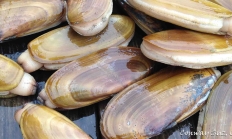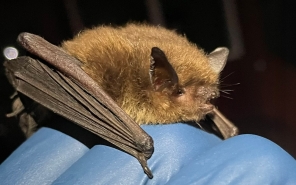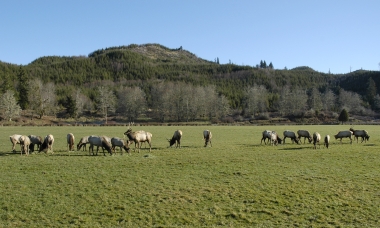
Search myodfw.com
Before shooting a bow, you’ll want to make sure it's safe to fire. Bow/arrow safety check list Check that the string and cable are in good condition and aren ’t rubbing or fraying at any point. Use bowstring wax regularly to keep your string in good condition and safe to shoot. Check that the cams, limbs and riser are all in good shape. Look for cracks, dents, breaks, delaminations, peeling fiberglass, and any mechanical parts that may be defective. If any part of the bow is suspect, don’t shoot it. Fix it or take it to an archery shop to


Fungus that causes white-nose syndrome in bats detected for first time in Oregon
SALEM, Ore.— The fungus that causes white-nose syndrome in bats has been detected in Clatsop County. White-nose syndrome is an infection in bats caused by the fungus Pseudogymnoascus destructans that disrupts hibernation, causing dehydration and starvation. Samples analyzed by U.S. Geological…

The southwest zone includes Umpqua River, Coos Bay, Coquille River, Port Orford, Rogue River and Chetco River - all of which offer shellfishing.
Turkeys make a lot of different sounds, many of which are different in spring and fall. Though most hunters can routinely fill tags by using only two or three sounds, it’s good to know what other sounds turkeys make and why. The hen yelp and variations The most commonly heard sound in the turkey woods is made by the hen, and it’s called a yelp. Toms also yelp, but it’s louder, raspier and often more drawn-out than that of hens. The yelp is usually delivered in a series of one-note tunes. However, yelps can take on various forms. Specifically, there

ODFW manages 20 wildlife areas across the state, each with a unique blend of fishing, hunting and wildlife viewing opportunities. Remember, you'll need a Wildlife Area Parking Permit for your visit. See the map and listing below to find the wildlife area nearest you.

ODFW manages 20 wildlife areas across the state, each with a unique blend of fishing, hunting and wildlife viewing opportunities. Remember, you'll need a Wildlife Area Parking Permit for your visit. See the map and listing below to find the wildlife area nearest you.

Commission meets June 12-13 in Pendleton
SALEM Ore. – The Fish and Wildlife Commission meets June 12-13 for a field tour on Thursday and a regular meeting Friday. See the agenda here. The meeting will also be livestreamed from the Commission page. To testify on an agenda item virtually, register on the agenda page at least 48 hours in…
Commission meets Aug. 15 in Salem
SALEM, Ore.—Oregon's Fish and Wildlife Commission will meet Friday, Aug. 15 in Salem at ODFW Headquarters, 4034 Fairview Industrial Drive SE. The meeting will be livestreamed from the Commission page. See the agenda here. (Note that Commission materials have moved to myodfw.com while ODFW's older…

Commission adopts revised State Wildlife Action Plan
SALEM, Ore.—The Commission approved a revised State Wildlife Action Plan (SWAP) today, a plan that serves as a roadmap for protecting Oregon's at-risk species and their habitats. The Plan incorporates the latest available information on species and presents recommended conservation actions to inform…



NW Fishing Dec. 4, 2025 Best bets for weekend fishing Winter steelhead are starting to show up in the North Fork Nehalem, Necanicum River, and Lower Columbia tributaries. These streams get early returning hatchery steelhead and will provide the best opportunity for catching winter steelhead in early December. Hatchery coho are still coming in on the Trask River and North Fork Nehalem River. Many fish are getting past prime, but there are still some in good condition available and will be throughout the month of December. (There is no retention of wild coho allowed.) There are still hold over trout
Whether it's concerns about your local fishery, questions about an upcoming hunt, or comments about an agency policy, we want to hear from you. Please feel free to call or send us an e-mail.

SW Fishing Dec 4, 2025 Best bets for weekend fishing: This is good time of year for Chinook anglers to check wild Chinook bag limits for the locations they are planning to fish. Lost Creek Reservoir has had great reports by folks trolling for rainbow trout. Trout stocking Regular stocking will resume February 2026. Trout stocking maps Check out the ODFW fishing and trout stocking maps to find nearby fishing locations, driving directions and descriptions of amenities. Sign up for the latest information on boater access Marine Board's Opportunities and Access Report incorporates information from federal and state agencies, local

